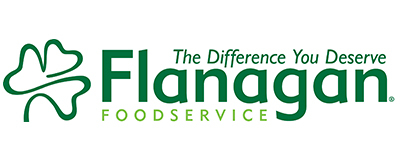
We collect basic website visitor information on this website and store it in cookies. We also utilize Google Analytics to track page view information to assist us in improving our website.

Hindsight is 2020, as the old expression goes. Certainly, as we rounded the corner in 2019, the prospect of a bright new year was uppermost in our minds.
Who could have foreseen a pandemic that would upend every aspect of foodservice? But there is a resilience in the industry and a sense of optimism that once we return to some semblance of normality, or at the very least, a new normal, restaurants will shine once again. To get a better read on what’s in store for foodservice, we turned to our data partner, Technomic Inc., to take a deeper dive into the trends for 2021:
Black Lives Matter protests in 2020 spurred calls to action for foodservice companies to fight for social justice and equality. As a result, businesses across the supply chain are committing to working harder to produce meaningful change. We’ll see more conscious efforts to hire, mentor and promote (especially in leadership positions) minority races and ethnicities, as well as women. There will also be an uptick in internal antibias training, partnerships that support minority organizations and donations to social justice-related causes.
BACKGROUND
Stat: Nearly half (46%) of consumers report that it’s important to them that restaurants are engaged in social justice – consistent across all generations. In addition, more than two-fifths (42%) of consumers, including 59% of Gen Zers, express that it’s important to them that restaurants support the Black Lives Matter movement.
Base: 1,000 consumers ages 18+
Source: Technomic Canadian Omnibus consumer survey data
Example: Uber Eats waived delivery fees for consumers ordering from Black-owned restaurants throughout 2020.
As the pandemic rolls into another year, consumers will continue to prioritize safety when making restaurant decisions. They’ll favour operators who earn their trust by always executing strict sanitation and social distancing protocols, such as proper food handling, rigorous restaurant cleaning and limited indoor seating. This will lead to more touchless digital menu boards, contactless ordering and delivery options, pre-packed and grab-and-go items, tamper-proof packaging, and high-quality air filtration and ventilation systems.
BACKGROUND
Stat: Nearly two-fifths (38%) of consumers think restaurants could do a better job promoting their safety and sanitation protocols.
Base: 1,000 consumers ages 18+
Source: Technomic Canadian Omnibus consumer survey data
In anticipation of a vaccine, operators across the world will innovate highly buzzworthy products to attract guests back into restaurants and stand above the competition. This is a tactic we’ve seen Asian markets employ during a previous easing of lockdown restrictions. Compelling menu development will include inventing wacky mashups and next-level collaborations, expanding into new mealparts and dayparts, and investing in product improvements.
BACKGROUND
Stat: Most consumers agree that they are likely to visit a fast-food (65%) or fast-casual (71%) restaurant that they don’t typically patronize if it has a unique limited-time offer.
Base: 551 and 701 consumers ages 18+
Source: Technomic Ignite consumer data featuring the 2020 Canadian Future of LSR Fast Food & Fast Casual Consumer Trend Report
Example: Woodhouse Brew Pub launched a modern take on nostalgic TV dinner trays with its “Hungry Friends” reheatable meals. (Toronto)
COVID-19 has motivated both consumers and operators to quickly embrace foodservice technologies that offer contactless and/or touchless aspects, including mobile apps, ordering kiosks and digital menu boards. Operators will test more advanced technologies in the coming year as consumers continue to prioritize safety and convenience. On the horizon innovations will include more GPS tracking, voice ordering via an AI assistant, facial recognition systems and drone delivery to provide frictionless off-premise services, as well as greater investments in robotics to maximize labour efficiencies for both back and front of house operations.
BACKGROUND
Stat: Nearly a quarter (23%) of consumers 18-34 strongly agree that if available, they would be interested in having items delivered via innovative delivery technologies (e.g., drones, self-driving robots, etc.).
Base: 1,282 consumers who ever order off-premise
Source: Technomic Ignite consumer data featuring the 2020 Canadian Delivery and Takeout Consumer Trend Report
Example: Swiss Chalet updated its mobile app. The chain’s new version of its mobile app features an updated interface where guests can save their favorite items, collect coupons in the Coupon Wallet, opt in or out of receiving silverware with their order, tip ahead and more. It also includes a “giving” feature where customers can gift Swiss Chalet meals to friends and family.
Operators will increasingly look to black and deep purple ingredients in 2021. All of these ingredients provide a wow-factor colour when featured in food and drink, and some also have either umami flavour profiles or immunity-boosting benefits (due to their anthocyanin-rich capabilities). Ingredients to watch include dark berries, such as saskatoon serviceberry and blackcurrant; purple corn and potato; black salt, kale and gnocchi; activated charcoal cocktails; squid ink beyond pasta dishes; and ingredients in ashes, such as ash-covered cheeses, onion or leek ash, etc.
BACKGROUND
Example: RGE RD’s Purple City cocktail with Park Distillery vodka, Hanson Distillery cherry rye, maple saskatoon berries and plum bitters (Edmonton)
Movements to support Canada’s economy will grow as borders remain closed and small businesses continue to struggle. We’ll see operators increase their sourcing from area suppliers and visibly promote these collaborations on menus. At the same time, community-minded consumers will actively seek to patronize restaurants where their money also helps support local farmers and other purveyors. Driving this effort will be distributor partnership with local suppliers and producers that help spread awareness of their products and fulfill growing patron demands.
BACKGROUND
Stat: Approximately two-thirds of consumers (67%) say they are more likely to purchase and/or are willing to pay more for food and beverage that is locally sourced.
Base: 355 consumers ages 18-73
Source: Technomic Ignite consumer data featuring the 2020 Canadian Generational Consumer Trend Report
Example: The Pickle Barrel celebrated Ontario farmers by rolling out LTOs featuring local ingredients, including rainbow trout from Manitoulin Island and corn from Waterford
Off-premise services have served as a lifeline for operators throughout the pandemic. But as consumers grow accustomed to the perks of these occasions (i.e., convenience, speed and contactless experiences), operators are hedging their bets by incorporating off-premise into their long-term strategy to offset future dine-in disruptions. We’ll see an uptick in new and remodeled stores that emphasize takeout, delivery, drive-thru and curbside pickup, as well as new and upgraded technology to make these services seamless and distinctive.
BACKGROUND
Stat: Approximately a third of consumers say they plan on ordering food and beverage for takeout (38%) and delivery (31%) more in 2021 than they did in 2020.
Base: 1,000 consumers ages 18+
Source: Technomic Canadian Omnibus consumer survey data

